Cinnamon Sugar Twisted Croissant Bread
This cinnamon sugar twisted croissant bread is so much easier to make than regular croissants and those layers of buttery sweet cinnamon are incredible!
The twisted croissant bread craze continues with this delicious cinnamon and sugar version. All the details on how to make this bread are below! (Guess what? It’s easy and fun!)
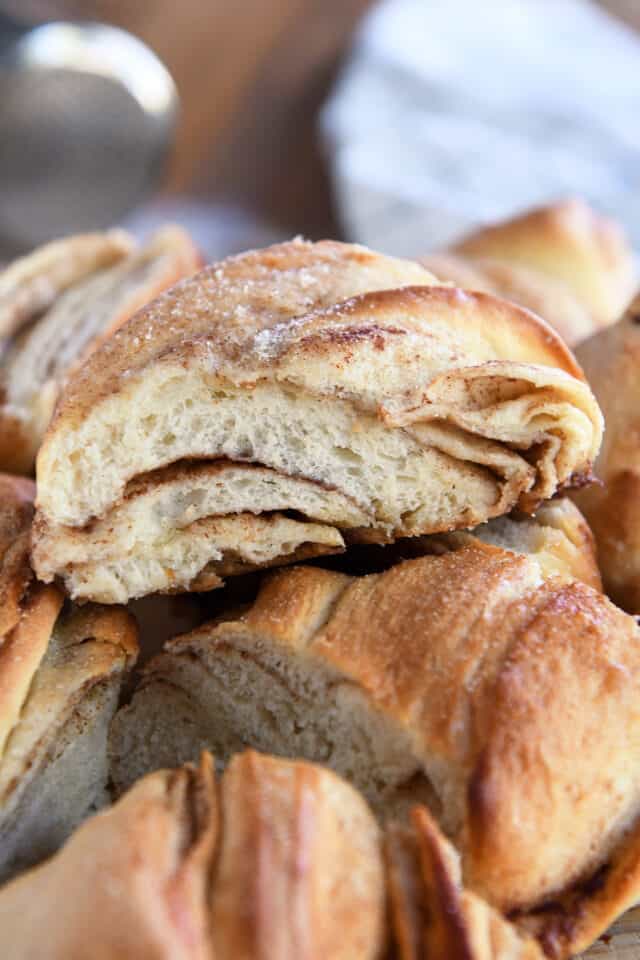
A Special Butter Packet
For the other two version of croissant bread (regular and chocolate), the butter packet included just…butter.
But for our cinnamon sugar version, we needed something special to amp up the cinnamon flavor.
This butter packet starts off by whipping softened butter with a bit of granulated sugar and cinnamon. THEN, and only then, is the butter folded into the parchment and rolled into a thin sheet.
Pro tip: because the butter is soft after mixing, you can easily ditch the rolling pin and press it into a thin layer inside the parchment with your hands.
The butter must go into the fridge to chill until firm. If not, it will be a nightmare to roll out with the bread dough. So don’t skip this step, pretty please!
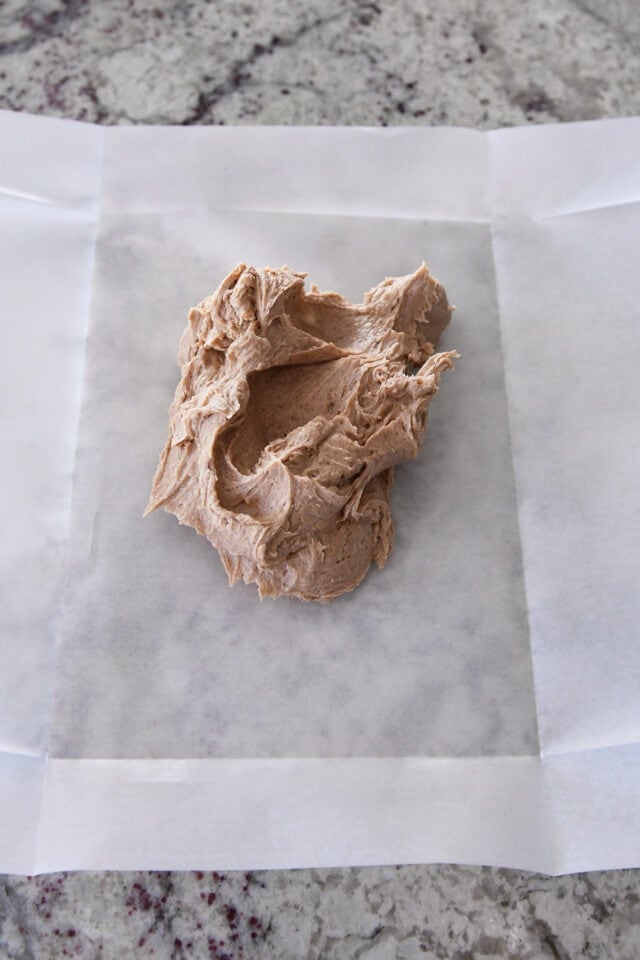
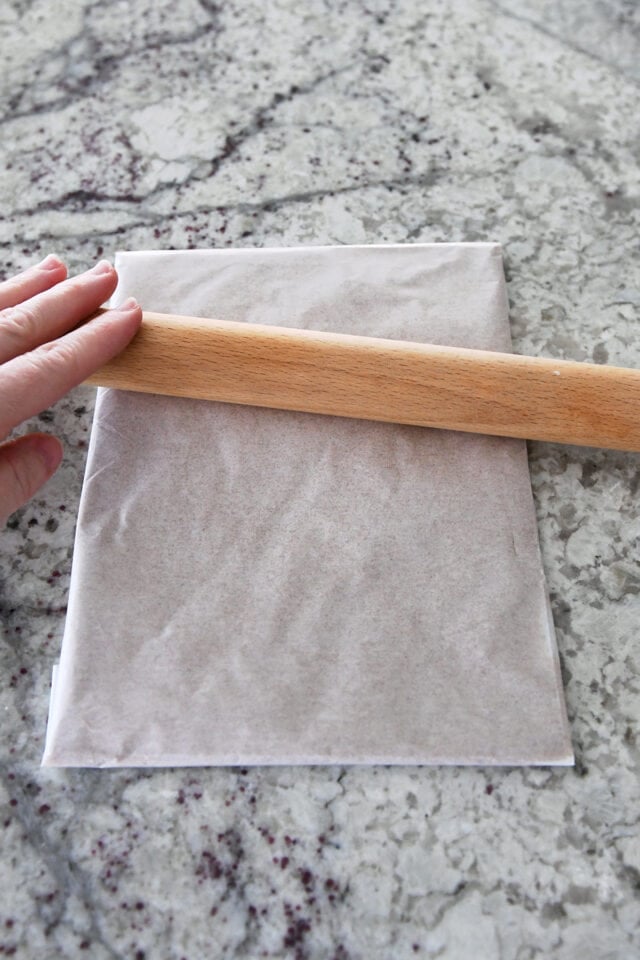
Folding for Flaky Layers
While the butter packet chills, make the simple French bread dough and let it rise until puffy and doubled.
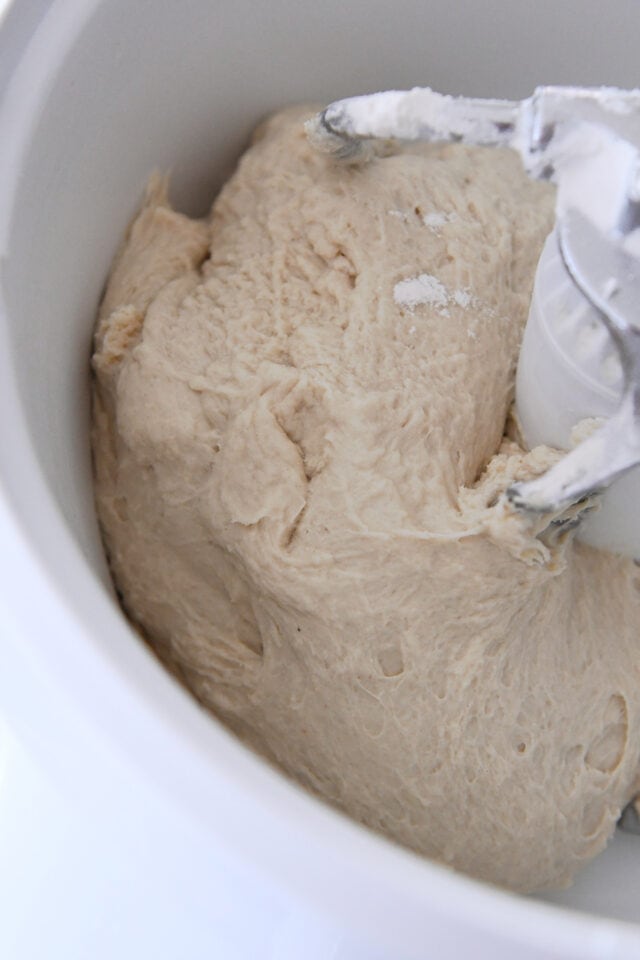
Then, press the dough into a rectangle on a lightly floured counter and follow these steps:
- Place the chilled sheet of butter in the center.
- Fold the right side of the dough halfway over the butter.
- Fold the left side of the dough over the butter overlapping the first gold by an inch or so.
- Fold the top and bottom edges of dough and pinch to seal.
- Fold the dough in half (left side to meet right side or vice versa).
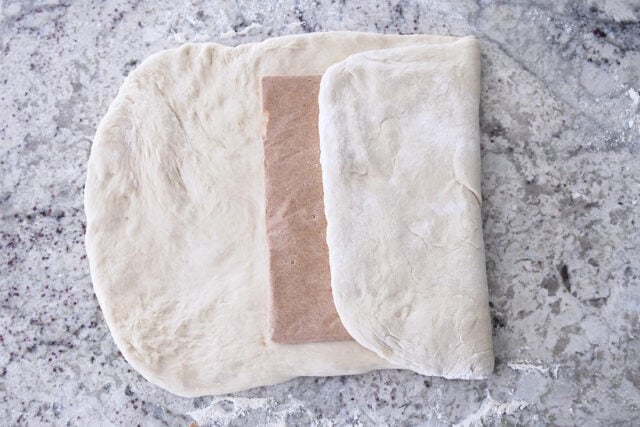
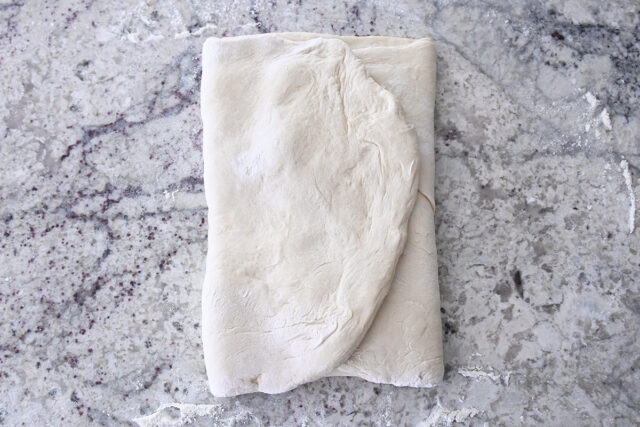
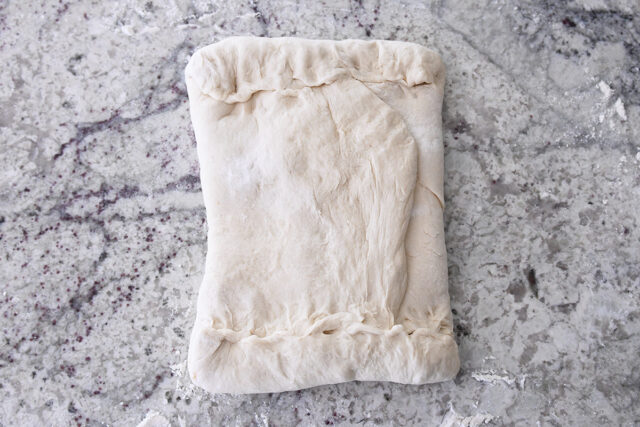
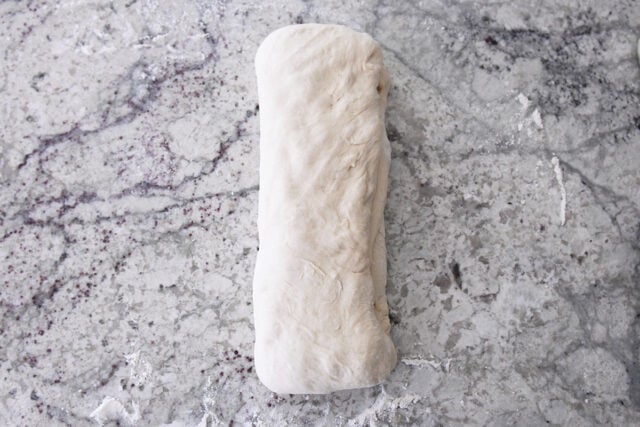
Roll and Fold
Roll the folded log of bread dough into a long thin rectangle, about 22 inches long and 8 inches wide. It doesn’t have to be exact.
Then fold again:
- Fold the top (short) edge of the dough to the center.
- Fold the bottom (other short) edge of the dough to the center.
- Fold the dough in half (from one of the short sides).
Tip #1: If at any point during the rolling and folding the dough springs back or isn’t rolling out very well, let it rest for 5-10 minutes to let the gluten relax.
Tip #2: If the butter is too soft and is making it hard or sticky to roll out, place the dough onto a parchment-lined baking sheet and refrigerate for 10-20 minutes to help it firm up before proceeding.
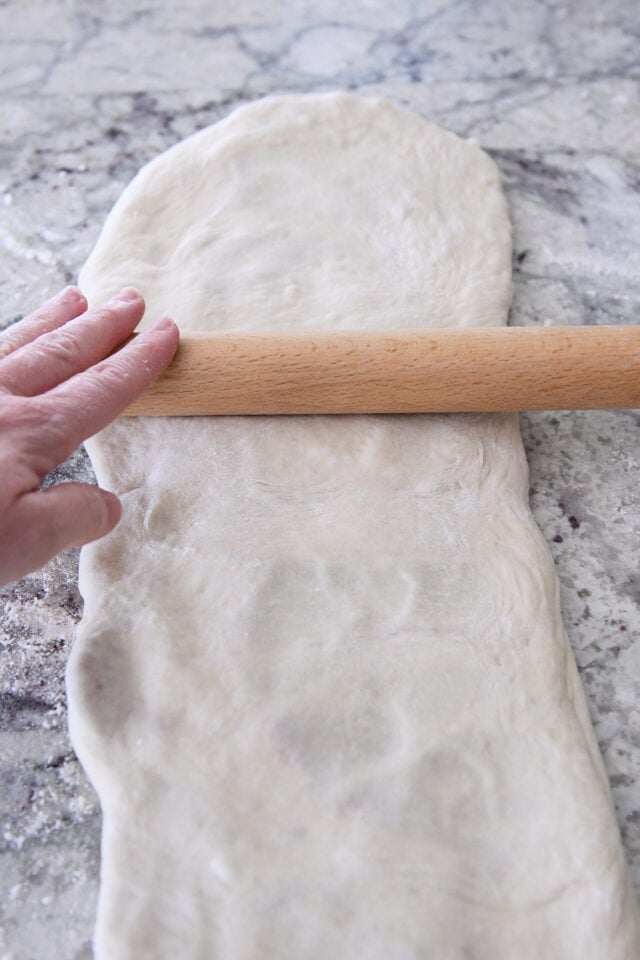
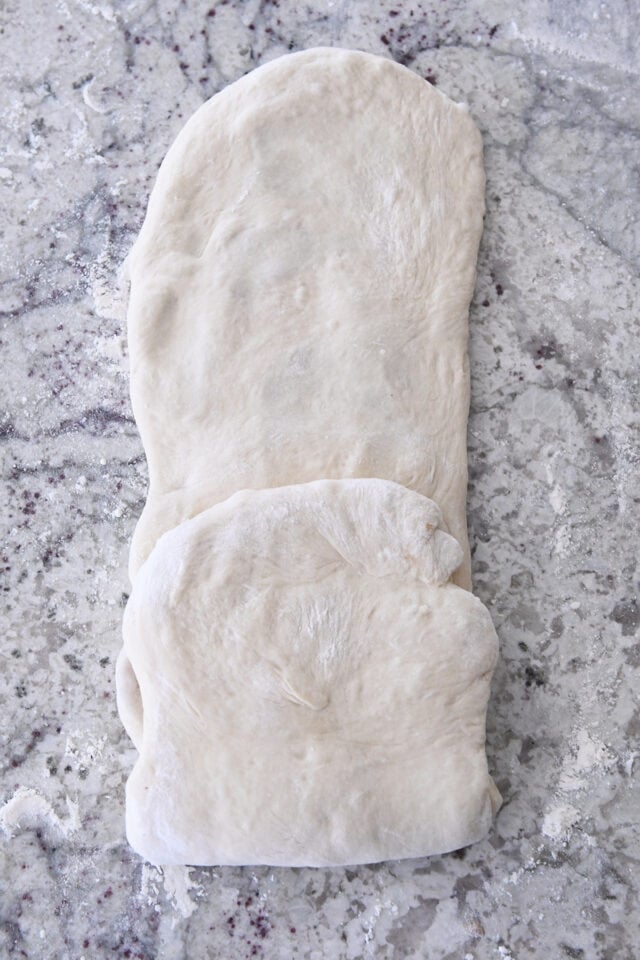
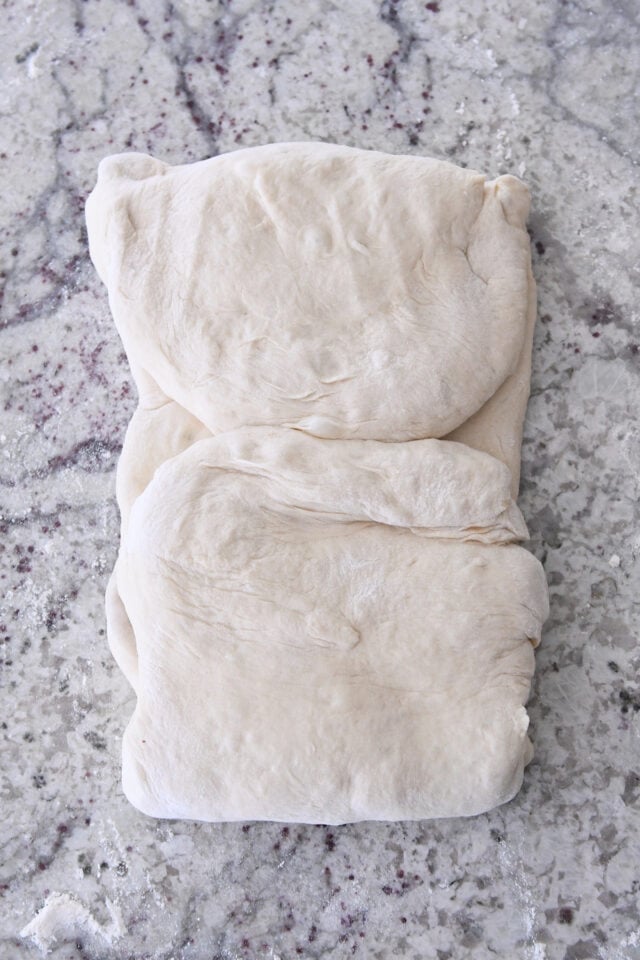
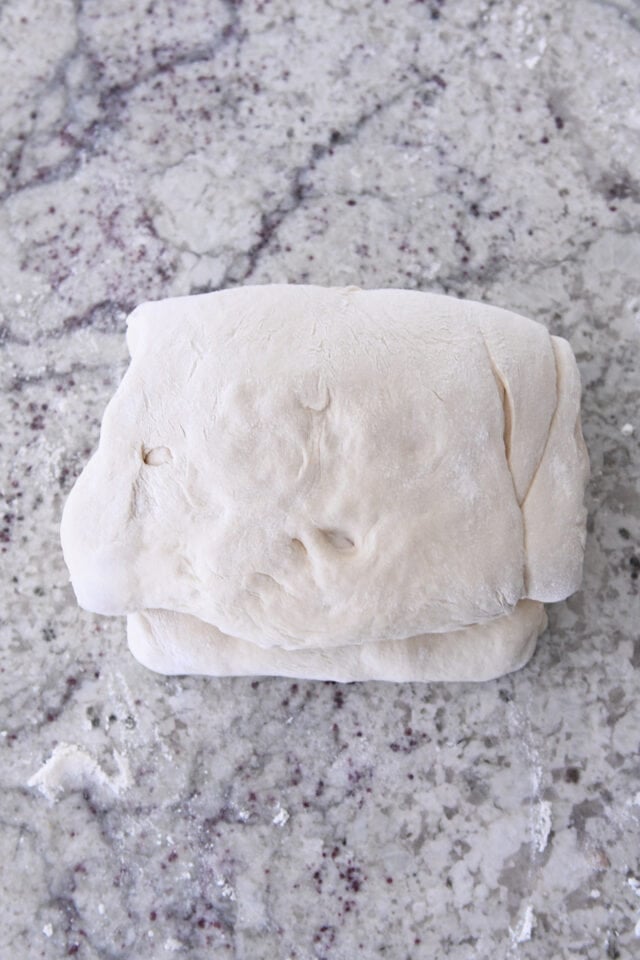
Roll and Cut
Roll the dough into a 12- or 13-inch square and cut into four strips.
Twist each strip several times and place on parchment-lined baking sheets. I use half sheet pans and bake two loaves per pan.
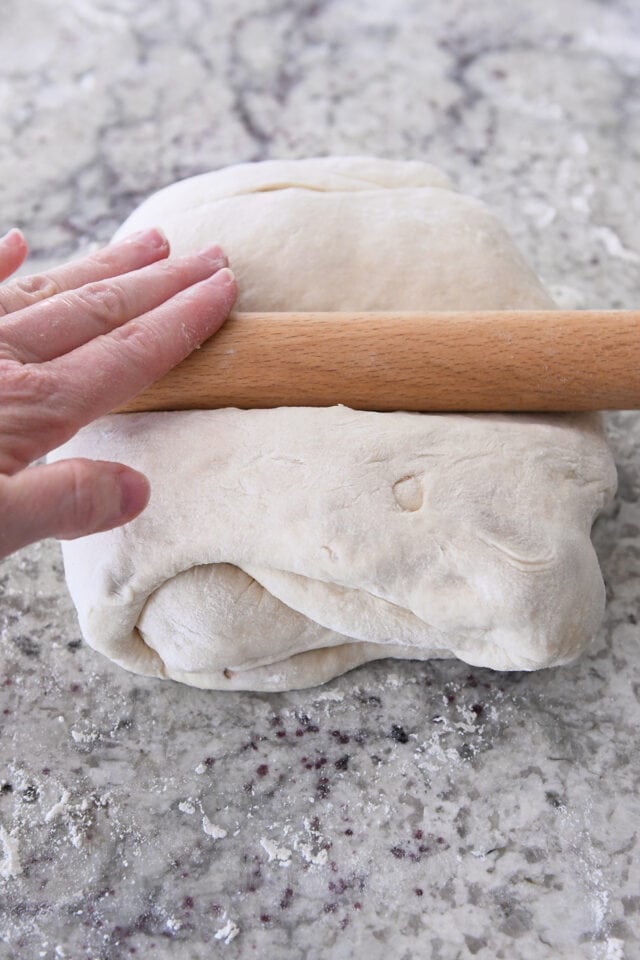
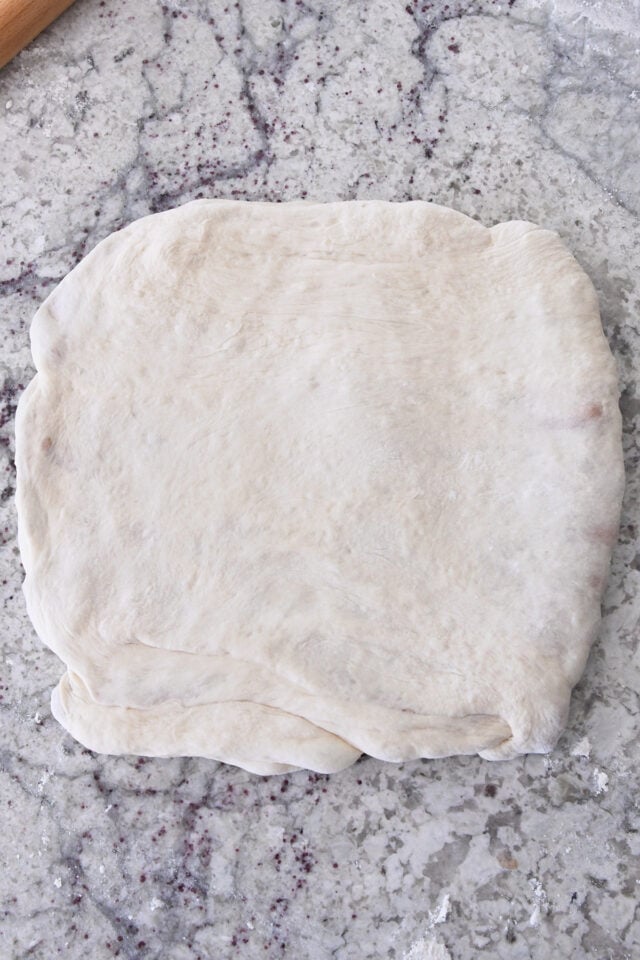
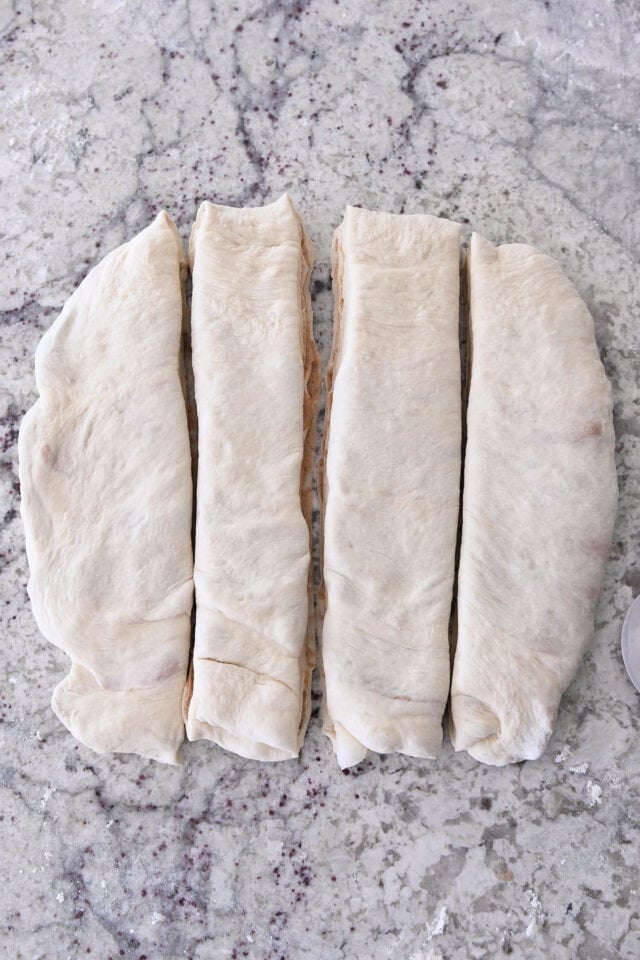
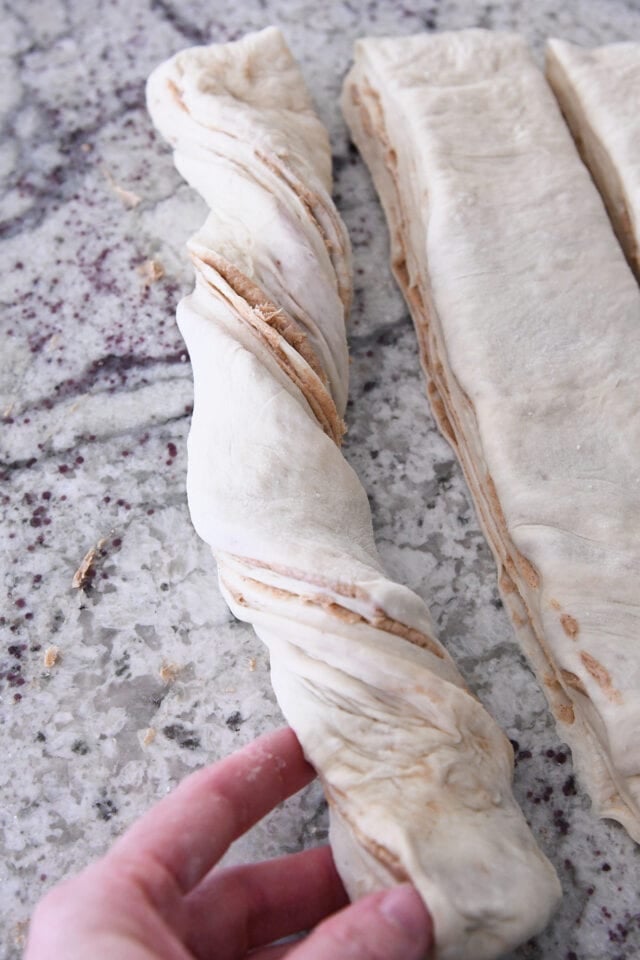
Let the dough rise until puffy.
This dough does best rising at cooler temperatures. If it rises in a too-warm spot, the butter will soften and melt before baking and you won’t get the flaky, buttery layers.
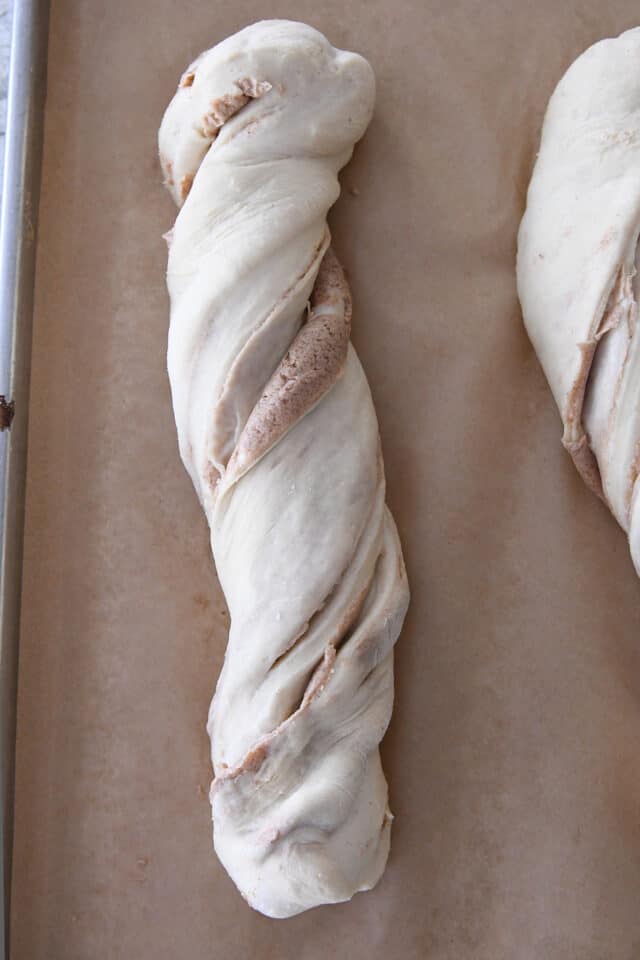
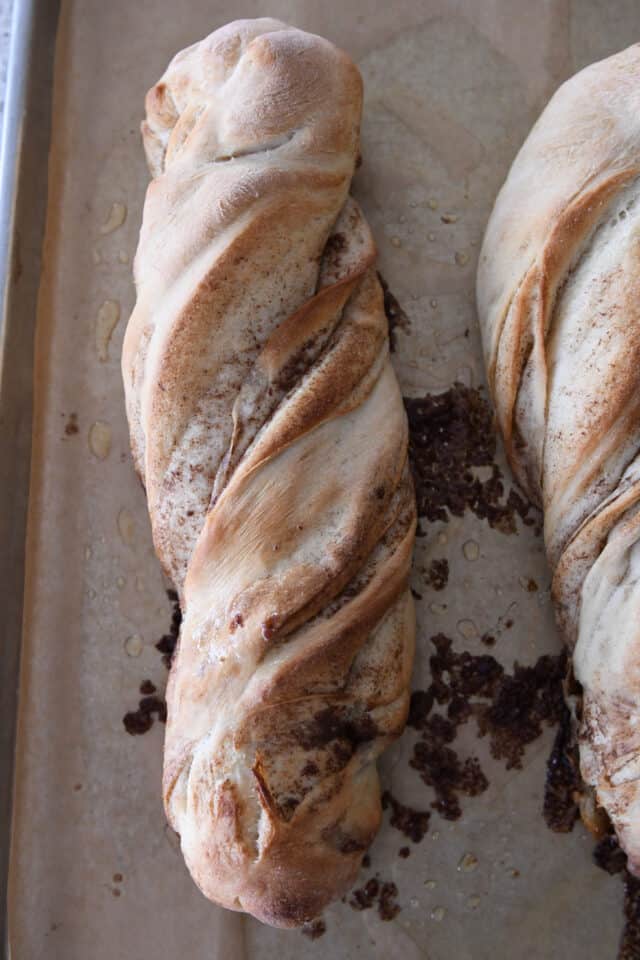
More Cinnamon and Sugar
It is totally normal for there to be a bit of leaked butter on the sheet pan after baking. We’ll use that to our advantage!
Immediately out of the oven, brush any butter that’s on the sheet pan over the top of the loaves. (If for some reason there isn’t enough butter for brushing, melt 1 to 2 tablespoons butter for brushing.)
Sprinkle cinnamon sugar over the top of the buttered loaves. Follow your heart here. There are no strict guidelines for how much cinnamon sugar to use.
Cinnamon sugar ratio: mix 1/2 cup sugar with 4 teaspoons cinnamon (increase cinnamon, if desired). Store extra cinnamon sugar topping in a covered container at room temperature (will keep for several weeks).
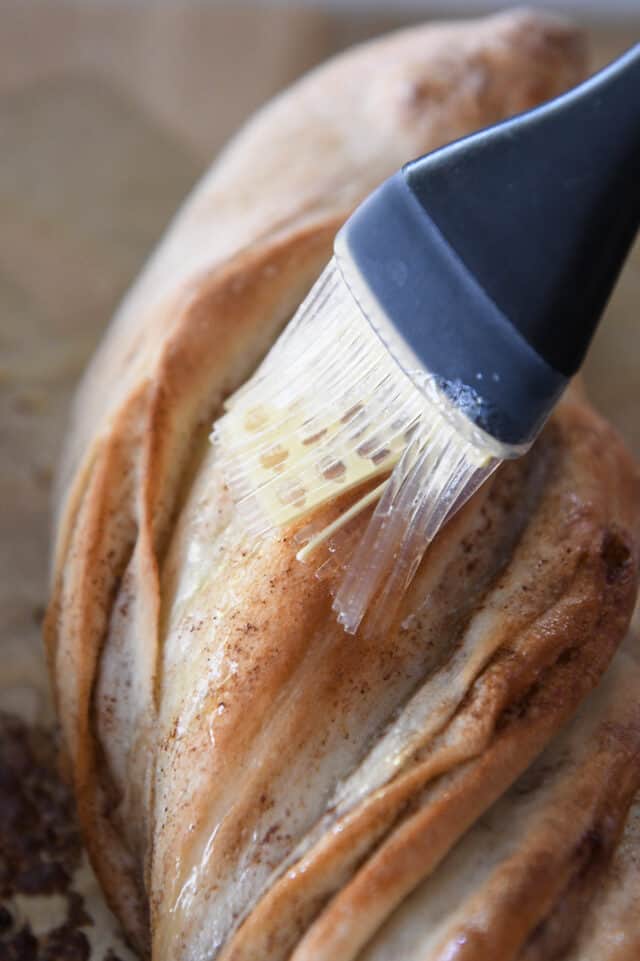
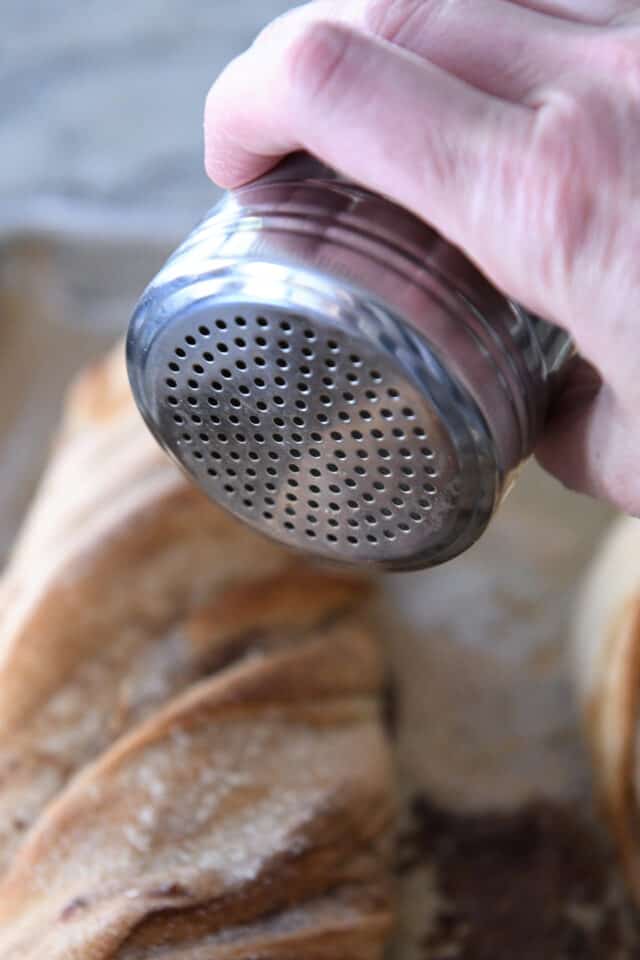
Cinnamon Sugar Croissant Bread
This bread is as delightful as it looks and sounds: soft, tender bread wrapped around layers of buttery, sweet cinnamon filling.
The bread itself is not overly sweet – it’s definitely not a cinnamon roll.
Think of it more like cinnamon toast meets the flaky layers of a croissant (made the lazy-girl way).
It’s divine warm. Delicious at room temperature. And honestly, just really incredible.
If you’ve loved the other variations of twisted croissant bread, you’re going to love this one. And if you haven’t jumped on the twisted croissant bread wagon yet, what are you waiting for??
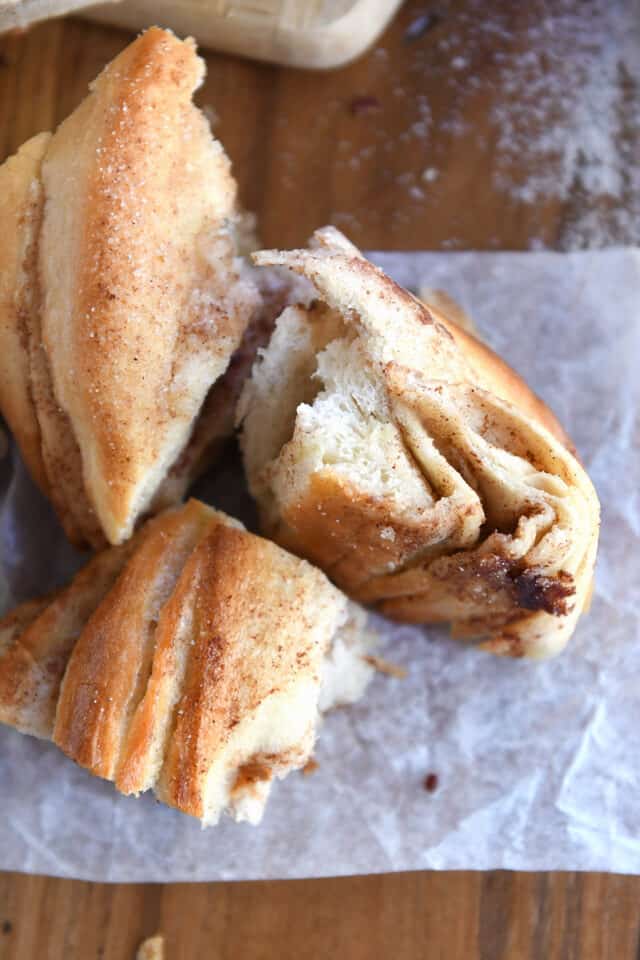
One Year Ago: One Pot Creamy Tuscan Pasta
Two Years Ago: Sourdough Pumpkin Muffins {a.k.a. The Best Muffins On The Planet}
Three Years Ago: Easy Homemade Broccoli Cheese Soup
Four Years Ago: The Best Taco Soup {Stovetop or Slow Cooker}
Five Years Ago: Soft and Chewy Caramel Popcorn
Six Years Ago: Philly Cheesesteak Sloppy Joes {30-Minute Meal}
Seven Years Ago: Amazing Pumpkin Chocolate Chip Cookies
Eight Years Ago: Perfect Pumpkin Chocolate Chip Cookies
Nine Years Ago: Slow Cooker Applesauce {No Sugar Added}
Ten Years Ago: Chocolate Chip Cookie Dough Ice Cream Sandwiches
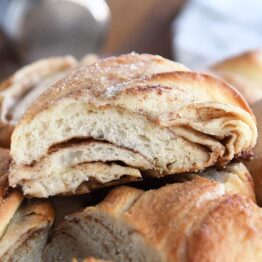
Cinnamon Sugar Twisted Croissant Bread
Ingredients
Butter Packet:
- 1 cup salted butter, cool room temperature
- ¼ cup granulated sugar
- 1 tablespoon ground cinnamon
Dough:
- 2 cups warm water, 105-110 degrees F
- 1 tablespoon instant or active dry yeast
- 2 tablespoons granulated sugar
- 1 ½ teaspoons salt
- 4 ¾ cups all-purpose flour, plus more for dusting
- Cinnamon sugar for sprinkling (see note)
Instructions
- For the butter packet: grab a piece of parchment paper about 16 1/4-inches by 12-inches (doesn't have to be exact, but should be close to those dimensions). Fold the two short edges of the parchment in toward each other about 4 1/2 inches. They will overlap a bit. Crease the edges well.
- Keep those edges folded in and fold the top and bottom edges in about 1 3/4-inches. It should form a little parchment packet when folded with the center rectangle dimensions about 8 1/2-inches by 7-inches (see note below for a visual). Set aside.
- With an electric mixer (handheld or stand mixer), whip the butter with the granulated sugar and cinnamon until well-combined.
- Unfold the parchment. Scrape the butter into the center square. Fold up the packet using the pre-creased folds and flip over so the folded edges are on the bottom.
- Use a rolling pin (or press with your hands), lightly roll the softened butter into a thin sheet so it reaches all the edges of the parchment packet and has a relatively even thickness. Chill in the fridge until firm.
- For the dough: In the bowl of a stand mixer fitted with the dough hook, add the water, yeast and sugar, and let sit until foamy, 2-3 minutes. Add the salt and flour and mix until a soft dough forms that clears the sides of the bowl. Add additional flour, a little at a time, if the dough is sticking to the dough hook or sides of the bowl. The dough should be soft but not overly sticky.
- Knead for 3-4 minutes until the dough is soft and smooth. Cover the bowl or transfer the dough to a lightly greased bowl and cover. Let rise until doubled, about an hour.
- Lightly deflate the dough and turn out onto a lightly floured counter. Roll into a rectangle about 18-inches by 11- or 12-inches.
- Take the butter packet out of the refrigerator, and unfold the parchment (but leave the butter on the parchment paper). Place the butter packet face down on the center of the rolled out bread dough. Peel the parchment carefully off the butter leaving the butter sheet on the dough.
- Work quickly and don't over work the dough during the next couple steps of folding and rolling so the butter doesn't get too soft!
- Fold one short side of dough about halfway to 2/3 over the butter. Fold the other short side of dough over the butter, overlapping the first folded side by about an inch.
- Fold the top and bottom edges over about 1/2- to 1-inch and press to seal.
- Fold the dough in half (from right to left or vice versa) once more.Starting in the center, roll the dough out into a long, thin rectangle, about 8-inches by 22-inches. If the dough springs back when rolling, let it rest for 5-10 minutes to let the gluten relax and roll again.
- Fold one short edge of the long rectangle into the center. Repeat with the other short edge so they meet in the middle. Fold the dough in half (from one of the short sides). Let the dough rest for 2-3 minutes.
- Prepare two half sheet pans by lining with parchment paper. Preheat the oven to 375 degrees F (400 degrees F for a darker crust).
- Roll into a 12-inch or 13-inch square. If the dough springs back when rolling, let it rest for 5-10 minutes to let the gluten relax and roll again. Cut the square into four strips.
- Take each strip, twist it 3-4 times and place on the prepared sheet pans (two strips per sheet pan, spaced several inches apart).
- Cover and let rise until noticeably puffy (the dough can rise in the refrigerator overnight or for several hours – when taking out of the refrigerator, if it hasn't risen enough, let it come to room temp and continue rising until nearly doubled). You don't want to let these loaves rise in an overly warm spot or the butter will melt before it hits the oven and you won't get the flaky, buttery layers.
- Bake the loaves until nicely golden, 20-22 minutes.
- Immediately out of the oven, use a pastry brush to brush any leaked butter on the sheet pan over the top of the loaves. Sprinkle the tops of the loaves with cinnamon sugar.
- Serve warm or at room temperature. Bread can be sliced or torn into pieces.

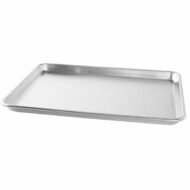

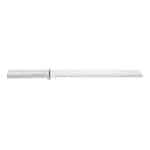
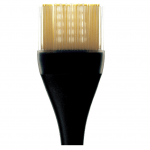
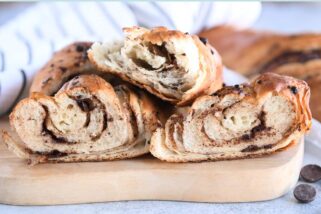
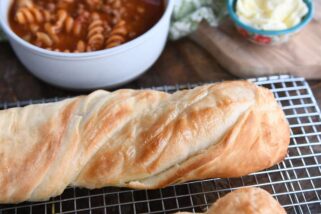


This looks so good! I’ve made the original a few times, and I’m excited to try this one. Any plans for a garlic cheese version?
Ooooh, GREAT idea! I’ll get to work on that!
This recipe made me feel like I could be on the Great British Baking show! So fun to make. The laminated layers were delightful and crispy. So excited to make all the variations!
As promised, this was EASY and magically delicious! I made this one and the regular for Thanksgiving. Everyone thought I was genius; of course, I had to agree with them. 😉
Haha, that made me laugh, Nina. You ARE a genius!
This bread was so delicious! I added a glaze to the top well, just because ha ha. It was so pretty and really yummy!! Thank you Mel!!
A glaze sounds fantastic! I’m so happy you liked the recipe, Sarah…thank you!
This looks amazing but I don’t own a stand mixer or a hand mixer that has a dough hook. I usually just make all my breads by hand. This is probably a dumb question but since you often put in a note saying hand mixing works but didn’t this time, I’ll just ask— would this work doing that method or is the dough too hard to work with?
Hi Nancy, yes, this is a pretty basic bread dough, so if you’re used to making bread dough by hand, this one should work just fine being made that way. Sorry I didn’t include that note!
Made this last night. Delicious is an understatement, but cinnamon sugar is one of my love languages so no surprise there. And I was pleasantly surprised by the ease of making it. I was grateful for the detailed instructions (I still managed to do one of the folds wrong, but it still turned out).
On a side note, I got distracted and totally left the loaves out on the counter overnight, uncovered. They stayed perfectly moist and chewy and delicious.
Thanks, Jessica! So happy you made and loved this. Thanks for letting me know!
thanks so much for this. I have not been so inspired and motivated looking at a recipe in awhile.
Also, delicious. My friends will also be thanking you.
Thanks, Jan!
This would be lovely on the Specialty Foods table at the church bazaar in two weeks. Can I freeze it successfully until then?
Hi Elaine, I haven’t actually tried freezing this bread because it disappears so fast around here! I think it’s definitely worth a try! If so, I’d try to gently warm it before serving.
This looks amazing – can’t wait to try it!
I’ve made your twisted croissant bread recipe before and it always turns out well AND makes me feel like a kitchen rock star. My 8 year old declares it’s the best bread ever! (This is the kiddo who hated bread just a few years ago . . . )
The last time I made it, I did a more savory twist (ha! no pun intended) on it, and added minced garlic, oregano and other garlic bread seasonings to the butter packet before chilling it, and didn’t add the sugar to the bread dough. Did everything else as written and came up with the most amazing garlic bread that really fancied up some spaghetti & meatballs. This bread is so versatile!
Thanks so much for another great recipe!
Your 8-year old is a smart kiddo! 🙂 The savory variation sounds AMAZING! I’m definitely going to try that!
Yes! Making this now. I logged on to your website to make pizza pinwheels for dinner and quickly adapted to making this. Now I just need to come up with a good main dish for dinner to go with it.
I mean, this bread is just fine for a main dish (haha).